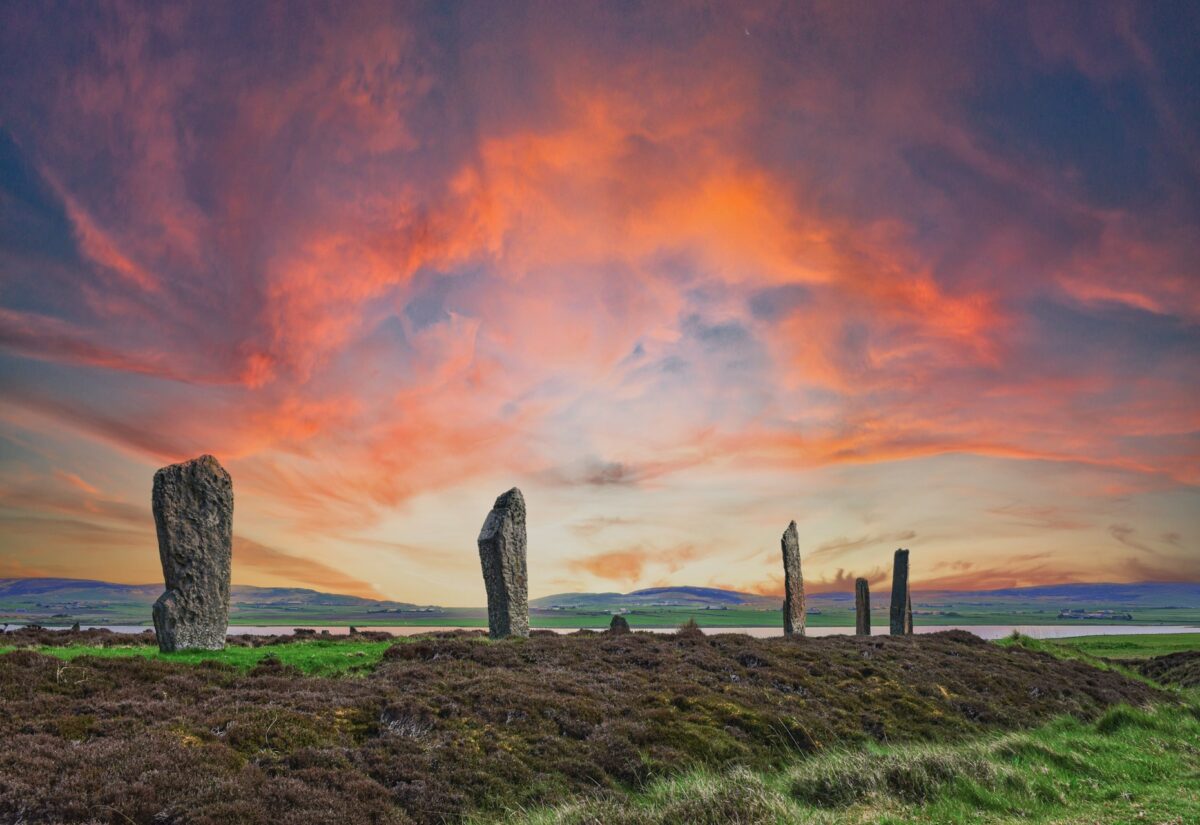 Unsplash/David Bayliss
Unsplash/David BaylissStonehenge gets all the attention—and fair enough, it’s iconic—but it’s only one part of a much bigger picture. Britain is home to hundreds of stone circles, and many of them remain largely unknown outside their local areas. These ancient sites are often older than the pyramids and packed with mystery. Who built them? What were they used for? Were they temples, calendars, gathering places, or something we still haven’t figured out? While no one has all the answers, each site offers its own clues, character, and atmosphere. Here’s a closer look at some of the most compelling British stone circles beyond Stonehenge, and why they’re worth your time.
Avebury (Wiltshire)
If you think Stonehenge is big, wait until you visit Avebury. This site is actually the largest stone circle in the world, enclosing a whopping 11.5 hectares. Built around 2500 BCE, it includes not just one, but multiple stone rings, a massive henge (an earthen bank and ditch), and a long avenue of paired standing stones stretching out into the countryside. Uniquely, a working village sits within the circle’s boundary, so you can literally have lunch inside a Neolithic monument. The site’s size, complexity, and continuous use across centuries suggest that Avebury was a place of major social and spiritual significance. English Heritage manages the site and offers excellent on-site interpretation.
Castlerigg (Cumbria)
Tucked into a natural amphitheatre of Lake District fells, Castlerigg has one of the most breathtaking backdrops of any ancient site in the UK. The circle, made up of 38 stones, dates to around 3000 BCE, placing it among the earliest stone circles in Britain. Though the original purpose remains unknown, it may have been linked to seasonal festivals, astronomical observations, or tribal gatherings. Its position allows for dramatic sunrises and sunsets to frame the stones throughout the year. What makes Castlerigg especially appealing is how untouched it feels—you can walk among the stones freely, with no fences or visitor centres to break the mood.
Callanish Stones (Isle of Lewis, Scotland)
Remote, windswept, and deeply evocative, the Callanish Stones (or Calanais) are among the most mysterious of Britain’s megalithic monuments. Located on the Isle of Lewis in the Outer Hebrides, the site consists of a central stone circle flanked by long stone rows in a cruciform pattern. Erected around 2900 BCE, it’s believed to have played a role in lunar alignments, particularly with the 18.6-year lunar cycle. Myths about giants turned to stone have swirled around Callanish for generations, and even today, it retains a powerful sense of the sacred. The stones were buried for centuries under peat and only rediscovered in the 19th century. VisitScotland offers detailed guides and travel info.
Ring of Brodgar (Orkney)
One of the crown jewels of Orkney’s Neolithic landscape, the Ring of Brodgar is a vast ceremonial circle that originally featured 60 standing stones arranged in a perfect circle more than 100 metres wide. Only 36 stones remain, but the scale is still impressive. The surrounding ditch, dug directly into solid rock, hints at the massive communal effort required to build it. Brodgar is thought to have been part of a ritual complex alongside the Standing Stones of Stenness, the Barnhouse settlement, and the recently excavated Ness of Brodgar, which has revealed stunning evidence of Neolithic art, architecture, and culture. The area is now a UNESCO World Heritage Site. Orkney.com is a great resource for exploring this ancient landscape.
The Rollright Stones (Oxfordshire)
This quirky and atmospheric site isn’t just a stone circle—it’s a collection of three separate monuments known collectively as the Rollright Stones: the King’s Men circle, the Whispering Knights dolmen, and the solitary King Stone. Each piece tells a part of a wider story that stretches from the Neolithic to the Bronze Age. Folklore abounds here, with stories of witches, petrified soldiers, and stones that move at midnight. Archaeologists believe the site had ceremonial purposes, possibly relating to burials or seasonal rites. Despite being just off a country road, the Rollrights retain a surprisingly eerie, timeless feel. The Rollright Trust maintains the site and its folklore.
Stanton Drew (Somerset)
Though less famous than Avebury or Stonehenge, Stanton Drew deserves more attention. The main circle here is one of the largest in Britain, measuring around 113 metres across. But what makes it really fascinating is what lies beneath the surface. Geophysical surveys in the 1990s revealed the remains of a complex wooden structure at its centre, similar to what was found at Durrington Walls near Stonehenge. These findings suggest a sophisticated ceremonial function, possibly involving feasting, rituals, or astronomical alignments. There are also two smaller stone circles and a stone avenue nearby, adding to the site’s complexity.
Beaghmore (Northern Ireland)
Discovered by chance during peat-cutting in the 1940s, Beaghmore is a collection of seven stone circles, twelve cairns, and over a dozen stone rows in County Tyrone. Dating to the early Bronze Age, Beaghmore appears to have been a ceremonial or ritual site, with some alignments possibly tied to solar and lunar events. The site’s layout seems to reflect a high degree of planning, and the contrast between large and small stones may have symbolic meaning. It’s less visited than other stone circles but offers a rich and evocative experience, especially on a misty day. Discover Northern Ireland offers visitor guidance and history.
Boscawen-Un (Cornwall)
Hidden in a Cornish field, Boscawen-Un is a beautiful and slightly oval stone circle made up of 19 stones, with one leaning stone in the centre. It’s thought to date to the Bronze Age and may have been used for rituals tied to fertility or seasonal change. What makes this circle especially striking is its sense of harmony with the landscape. It feels like it belongs there, as if it grew out of the ground. The site has strong connections to local folklore and Druidic revival groups, who still hold ceremonies there today.
Drombeg Stone Circle (Ireland, honorary mention)
Though technically outside the UK, Drombeg in County Cork is worth a mention for its preservation and insight into prehistoric life. Also known as the Druid’s Altar, it’s a small, compact circle of 17 stones aligned with the setting sun on the winter solstice. Nearby are the remains of a prehistoric cooking site and hut foundations, giving us clues about the everyday lives of the people who built it. It’s a reminder that these stone circles weren’t just about ritual—they were tied into the rhythms of life.
Final thoughts
Stonehenge might be the superstar, but it’s far from the whole story. Britain’s landscape is dotted with these ancient, often overlooked sites, each one a puzzle piece from a time before written records. Whether built for worship, community, astronomy, or something we’ve yet to guess, stone circles show us that prehistoric people were highly organised, thoughtful, and deeply connected to the world around them. Exploring these circles isn’t just about admiring the stones—it’s about stepping back into a world where myth, nature, and monument were tightly woven together.



